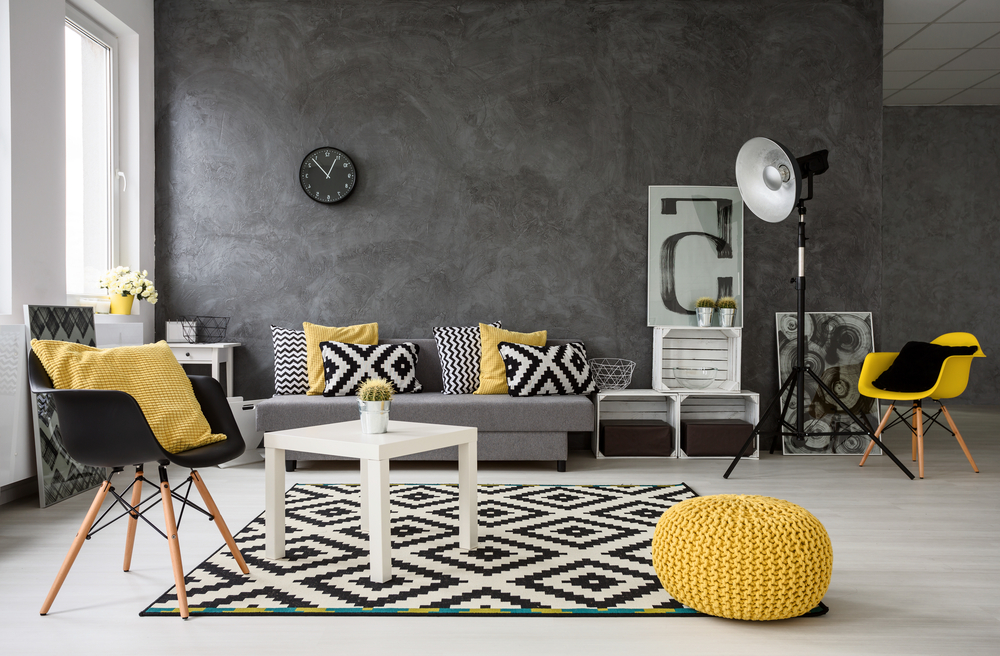How To Make Your Home Allergy-Free And Eco-Friendly
If it feels like it’s the worst allergy season yet, it’s because it is. A recent study in the journal Lancet Planetary Health found that both airborne pollen counts and pollen season duration have increased as temperatures have climbed over the past 20 years. While controlling the atmosphere is impossible, there are many efforts we can make to live in a home that is less triggering of allergies and easier on our respiratory systems.
According to Dr. Lakiea Wright, who is a board-certified allergist with Brigham and Women’s Hospital and medical director at Thermo Fisher Scientific, there are three big peaks in pollen production throughout the year. “Trees like oak, ash, birch, and maple see pollen spikes in the spring. Pollen from timothy grass, bluegrass, and orchard grass peaks over the summer, and ragweed pollen surges in the fall. Many people are sensitive to multiple types of pollen and if the seasons are getting longer, there will be less relief for allergy sufferers as these seasons begin to overlap.”
If you’re feeling the symptoms of seasonal allergies, Dr. Wright suggests making an appointment with a healthcare provider to get an allergy test before doing anything else. “Every spring millions of people seek allergy relief through over-the-counter drugs without really knowing their diagnosis,” she says. “But we’ve seen firsthand how life-changing it can be when you finally know what’s causing those problems with breathing, itching, rashes, or congestion. Once you have that information, and you know that dust, pollen or something else is causing the problem, you can employ strategies to avoid it.”
Buy An Air Purifier
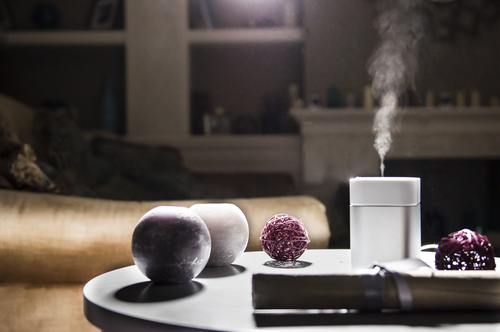
Buying a state-of-the-art air purifier like the Molekule requires the least amount of effort and is worth the investment in your health. Recommended by expert biohacker, Luke Storey, this appliance is truly “form meets function.” It’s the first air purifier to use Photo Electro-Chemical Oxidation (PECO) technology to destroy allergens on a microscopic level. Another bonus is that the aesthetic design of it is just as brilliant as the technology behind it. The Molekule is also portable, made from aluminum and unobtrusively fits into any interior design scheme.
Honeywell also has a good selection of air purifiers with HEPA filters for rooms of various sizes from extra large to desktop (perfect for the office). All are capable of removing 99.97% of microscopic allergens in the air. They are available in a range of prices with a variety of features including Bluetooth.
Edit Your Home
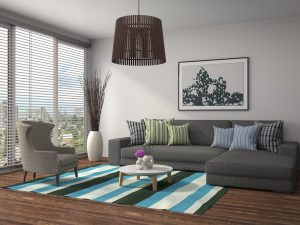
The first step to having a less toxic home is to get rid of clutter, furniture and decor that attracts dust. This doesn’t mean you need to have an entirely empty space, but consider removing any excessive items during peak allergy seasons. If you don’t want to throw things out or give away items, consider switching up your accessories seasonally and refresh periodically.
Get Real About Chemicals
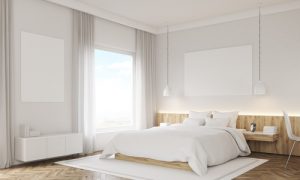
Erica Reiner of Eco Method Interiors specializes in designing health and eco-friendly homes and businesses. Her approach is to avoid products with chemicals as much as possible. “Unfortunately our country doesn’t have protective laws banning chemicals that are harmful to us through everyday products and the home goods industry is no different.”
It’s unrealistic for most people to steer clear of absolutely everything that could potentially be harmful. So, she generally recommends avoiding anything with AZO dyes, softeners or fire retardants, PVC, phthalates, and VOCs. But to simplify, a good rule of thumb is to avoid home furnishings made with synthetic materials and choose items that are certified by third parties as non-harmful.
“Look for things made with natural fibers that are grown and not made, see if they’re made responsibly and have a certification as such, see if they are free from AZO dyes and have low impact dyes instead,” she says.
Choose Less Toxic Furniture

Safe furniture is easier to find than you might believe. Pottery Barn’s Comfort Eco Roll Arm Slip Covered Sofa is Greenguard Gold Certified. Six different covers and several customizable styles are available. This is a soft, comfortable piece of furniture that will look beautiful in contemporary or traditional homes.
Another option is Cisco Brothers. They have an entire line that is better for both people and the environment with everything from sofas to chairs, ottomans and even beds.
Switch Out Your Window Treatments
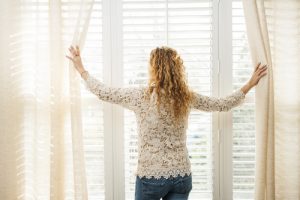
If you are allergic to dust, avoid fabric curtains because they are dust collectors. Reiner also suggests avoiding faux wood and PVC blinds. Swap them out for bamboo or wood window treatments instead. The Shade Store has many sophisticated, eco-friendly options and they will even measure your space at no cost.
Get Rid Of Carpeting
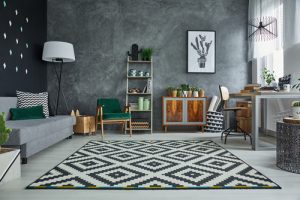
If you’re building a new home or renovating, allergy sufferers should avoid carpeting. Reiner says cork flooring is the best for allergy sufferers because it’s both naturally antimicrobial and fire retardant.
But if you must install carpeting, she says, “100% wool is a great option.” Choosing carpet squares instead of traditional wall-to-wall carpeting. “With tiles, you can just replace one small area as it wears over the long term.”
Area rugs, while attractive, can attract dirt and dust. So choosing natural ones made with non-toxic dyes like the washable line from Lorena Canals is ideal. There are cute styles for children as well as more contemporary designs for every room in the home.
Buy A Good Vacuum Cleaner
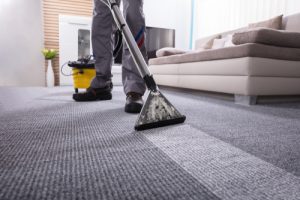
A good vacuum cleaner is a necessity no matter what kind of flooring or furniture you have. The new Dyson V11 is a must-have for any home, but it’s particularly essential for renters or homeowners who may be stuck with carpeting. This stick model has twice the suction of any cordless vacuum for a truly deep clean, capturing over 99% of microscopic dust particles. It even automatically adjusts for all type of flooring, so the settings don’t need to be changed as you clean. There are even a variety of tools to clean every surface from upholstery to crevices, for dusting, etc.
Prevent Mold Before It Starts
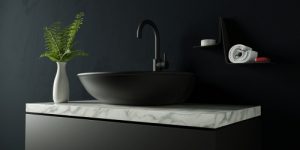
Mold can happen at any time of the year. Both Dr. Wright and Reiner suggest using a dehumidifier in low ventilation areas of the home like basements.
Bathrooms without windows or adequate ventilation can be breeding grounds for mold and mildew, especially on towels. A heated towel rack like Amba’s Radiant Wall Mount Electric Towel Warmer doesn’t only inhibit the growth of mold and mildew on towels, but it makes a very sleek addition to any bathroom.
Change Your Bedding

Look for Oeko-Tex certified bedding, which is certified free of dyes and synthetic chemicals such as My Sheets Rock. This is a new brand of sheets made from 100% bamboo rayon. This fabric wicks away moisture and minimizes odors. It also maintains an average lower temperature (four degrees cooler) and with 50% less humidity than most sheets. So they are ideal for people who get sweaty at night. Even better, they feel soft as silk.
Luxury French brand Yves Delorme has a line of anti-allergy comforters and pillows made with a machine-washable alternative to down. So you can avoid dry cleaning chemicals and the high cost of professional cleaning.
Cover Your Pillows, Mattresses And Box Springs
Using anti-allergy covers for your pillows, mattresses and box springs is an easy fix. It also extends the life of your linens. Make sure both the mattress cover and pillow covers have zippered closures for complete protection.
Avoid Irritants In Your Laundry Detergent

Dr. Wright recommends washing your sheets in hot water, “130 degrees and up is best to kill dust mites” she says.
It’s also ideal to avoid heavily perfumed and chemically formulated detergent. Brooke & Nora At Home is a new line of goat milk based laundry products. The powdered formula dissolves easily and is free of harsh chemicals. The line even has dryer balls, which are a great alternative to synthetic dryer sheets as well as essential oils and a stain stick.
Use Safer Paint
A freshly painted wall looks great but isn’t exactly easy on the respiratory system. So choosing a paint like EasyCare by True Value is a better choice. This low odor and low VOC paint is certified by the Asthma and Allergy Foundation of America (AAFA). It is available in several finishes and a full range of colors.

